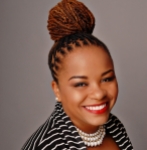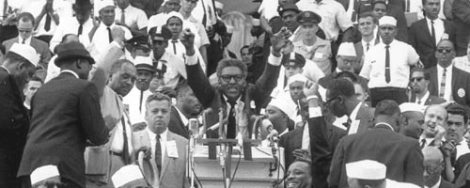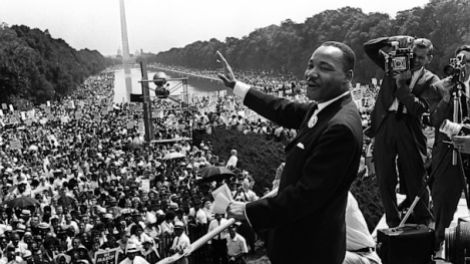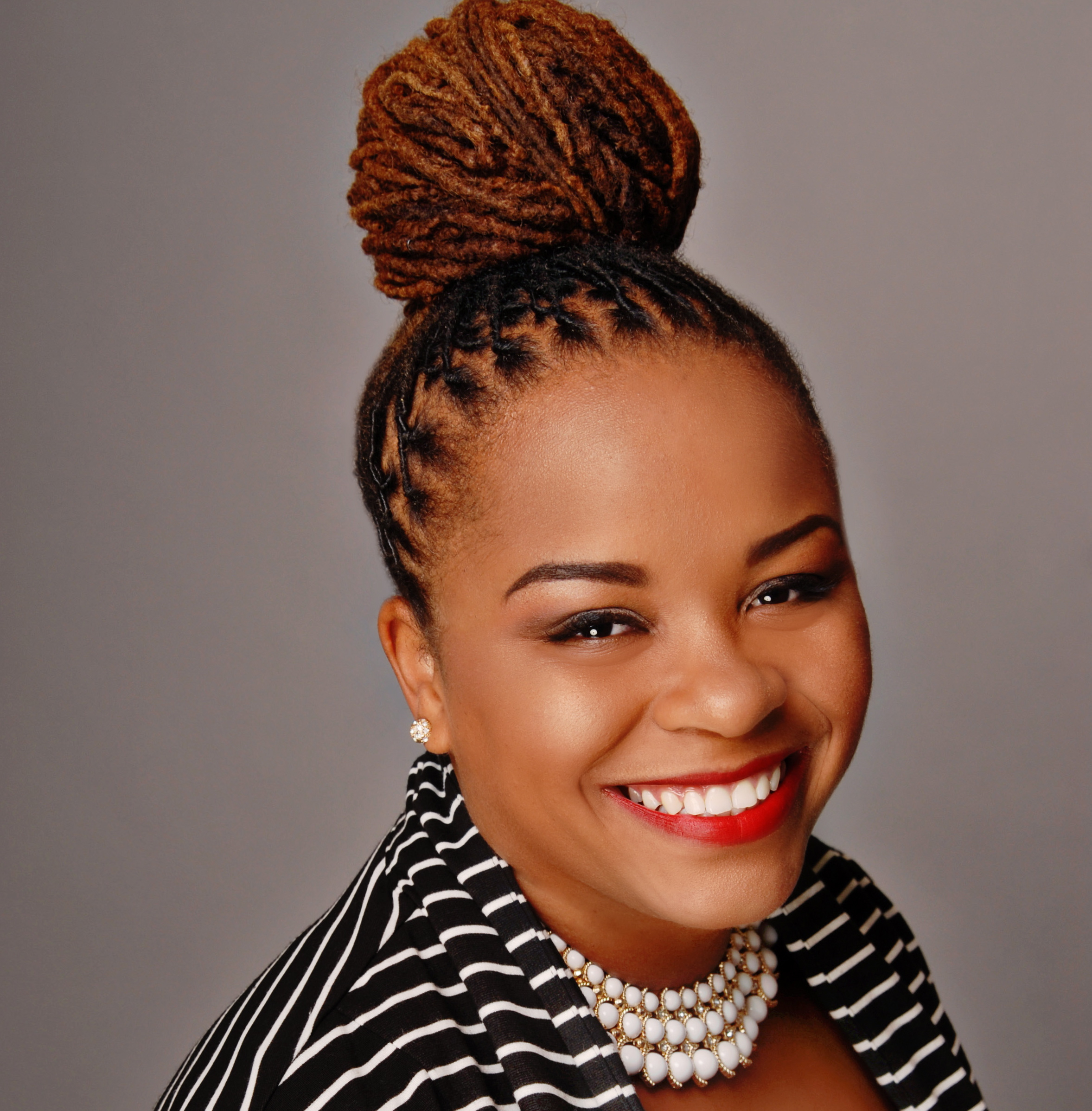Fifty years ago on this day, thousands of Historically Black College and University (HBCU) staff, faculty, alumni and students (as well as future ones) were participants in the 1963 March on Washington. Think you know everything there is to know about their involvement? We’re betting you don’t. Here are the five best kept secrets of HBCU-related involvement in the march.
5. Fisk’s W.E.B. Du Bois Dies on Eve of the March
 National Association for the Advancement of Colored People (NAACP) Executive Director Roy Wilkins had the mammoth task of announcing that Dr. W.E.B. Du Bois died the previous day in Accra, Ghana to the audience of 250,000 marchers. Described as a “reluctant tribute,” Wilkins reportedly only begrudging made the announcement because he didn’t want A. Philip Randolph to do it. Wilkins said of Du Bois, a 1888 graduate of Fisk University and the first African-American to be awarded a doctoral degree from Harvard University:
National Association for the Advancement of Colored People (NAACP) Executive Director Roy Wilkins had the mammoth task of announcing that Dr. W.E.B. Du Bois died the previous day in Accra, Ghana to the audience of 250,000 marchers. Described as a “reluctant tribute,” Wilkins reportedly only begrudging made the announcement because he didn’t want A. Philip Randolph to do it. Wilkins said of Du Bois, a 1888 graduate of Fisk University and the first African-American to be awarded a doctoral degree from Harvard University:
“Regardless of the fact that in his later years Dr. Du Bois chose another path, it is incontrovertible that at the dawn of the twentieth century his was the voice that was calling to you to gather here today in this cause. If you want to read something that applies to 1963 go back and get a volume of The Souls of Black Folk by Du Bois, published in 1903.”
4. Shaw’s Ella Baker Unheralded During Program
 Often dubbed the “Godmother of SNCC,” Ella Josephine Baker was instrumental in the founding of the Student Nonviolent Coordinating Committee (SNCC). Organized on the campus of Baker’s alma mater Shaw University in 1960, SNCC leaders were influenced by Baker’s adherence to “participatory democracy” and they relied on her experience to help coordinate the 1961 Freedom Rides with the Congress For Racial Equality (CORE). Yet, by the time of the 1963 march, Baker, who had worked in the trenches with the Rev. Dr. Martin Luther King from the Southern Christian Leadership Conference’s (SCLC) founding in 1957 to 1960, was not a favorite of the movement’s male-driven hierarchy. Dominated by male voices, the program did at least acknowledge a short list of “Negro Women Fighters for Freedom” including Daisy Bates, Fisk’s Diane Nash, Alcorn Agricultural and Mechanical College (now Alcorn State University) alumna Myrlie Evers, Prince E. Lee (widow of Herbert Lee), Rosa Parks, who attended Alabama State Teachers College for Negroes (now Alabama State University) and Howard University alumna Gloria St. Clair Hayes Richardson. Baker, the 1927 valedictorian of her Shaw graduating class, however, was unmentioned.
Often dubbed the “Godmother of SNCC,” Ella Josephine Baker was instrumental in the founding of the Student Nonviolent Coordinating Committee (SNCC). Organized on the campus of Baker’s alma mater Shaw University in 1960, SNCC leaders were influenced by Baker’s adherence to “participatory democracy” and they relied on her experience to help coordinate the 1961 Freedom Rides with the Congress For Racial Equality (CORE). Yet, by the time of the 1963 march, Baker, who had worked in the trenches with the Rev. Dr. Martin Luther King from the Southern Christian Leadership Conference’s (SCLC) founding in 1957 to 1960, was not a favorite of the movement’s male-driven hierarchy. Dominated by male voices, the program did at least acknowledge a short list of “Negro Women Fighters for Freedom” including Daisy Bates, Fisk’s Diane Nash, Alcorn Agricultural and Mechanical College (now Alcorn State University) alumna Myrlie Evers, Prince E. Lee (widow of Herbert Lee), Rosa Parks, who attended Alabama State Teachers College for Negroes (now Alabama State University) and Howard University alumna Gloria St. Clair Hayes Richardson. Baker, the 1927 valedictorian of her Shaw graduating class, however, was unmentioned.
3. Wilberforce & Cheyney’s Bayard Rustin Organized March
Despite being largely conceptually credited to labor leader A. Phillip Randolph, Bayard Rustin was the principal organizer of the march. As a Quaker, Rustin was unique among his peers; he was not only a pacifist but also an unashamed gay black man. Afraid that his sexual orientation (which was then criminalized in many states) would thwart their larger causes, civil rights leaders who would often distance themselves from Rustin, now depended on his organizing skills to pull-off the greatest demonstration of nonviolent protest.
In an age before social media, cellphones, fax machines or desktop computers, Rustin managed to orchestrate the peaceful and orderly protest of more than 250,000 marchers though a system of thousands of “bus captains” who relied on Organizing Manual No. 2, his 12-page practical, philosophical and political manual on what and why of the march, where to park, what to shout, where the bathrooms were. On the day of the march, Rustin kept a stack of cue cards in his pockets, which listed each anticipated bus as well as all points-of-contact. No newcomer to the struggle for civil and human rights, Rustin began his activism as a student at Wilberforce University, where he led a protest against poor cafeteria food and later, at Cheyney State Teachers College (now Cheyney University of Pennsylvania), where he emerged as an antiwar spokesman on campus.
2. American Baptist & Fisk’s John Lewis Changed His Speech
Although he would later transfer to and graduate from Fisk University in 1967, now Congressman John Lewis began his activism as a student at American Baptist Theological Seminary (now American Baptist College) in Nashville, Tennessee. By 1963, the successful direct-action protests of Nashville’s black college student cohort James Bevel, Diane Nash, Marion Berry and C.T. Vivian were synonymous with nonviolence and had helped catapult Lewis to the chairmanship of the Student Nonviolent Coordinating Committee (SNCC). SNCC leaders, as well as those of the Congress of Racial Equality (CORE) planned to use the march as a platform to voice their displeasure with the Kennedy administration’s lukewarm support for civil rights. Initially, Lewis’ speech hammered the Kennedy White House for its failure to protect southern blacks and civil rights workers from violent attacks. At the behest of Roy Wilkins and Kentucky State University alumnus Whitney Young, Lewis removed phrases like:
“In good conscience, we cannot support wholeheartedly the administration’s civil rights bill, for it is too little and too late…
…I want to know, which side is the federal government on?
…To those who have said, “Be patient and wait,” we must say that “patience” is a dirty and nasty word. We cannot be patient, we do not want to be free gradually. We want our freedom, and we want it now. We cannot depend on any political party, for both the Democrats and the Republicans have betrayed the basic principles of the Declaration of Independence.
…We all recognize the fact that if any radical social, political and economic changes are to take place in our society, the people, the masses, must bring them about. In the struggle, we must seek more than civil rights; we must work for the community of love, peace and true brotherhood. Our minds, souls and hearts cannot rest until freedom and justice exist for all people.”
The time will come when we will not confine our marching to Washington. We will march through the South, through the heart of Dixie, the way Sherman did. We shall pursue our own scorched earth” policy and burn Jim Crow to the ground — nonviolently. We shall fragment the South into a thousand pieces and put them back together in the image of democracy. We will make the action of the past few months look petty. And I say to you, WAKE UP AMERICA!
1. Morehouse’s Martin Luther King Speech Almost Didn’t Include His Dream
Fifty years later, the 1963 March on Washington is now synonymous with Morehouse College alumnus the Rev. Dr. Martin Luther King, Jr.’s “I Have a Dream” speech. King agreed to speak last because none of the other program participants wanted to, fearing that the news crews would have already left. His speech was supposed to be limited to just four minutes but grew to sixteen minutes after singer Mahalia Jackson belted out from behind him: ‘Tell them about the dream, Martin. Tell them about the dream!’” Jackson was referring to an address she had heard King give two months earlier in Detroit. King honored her request by extemporaneously adding most of the content at the lecturn. In doing so, King gave one of the most compelling addresses in American history.
 A 2003 graduate of Fisk University, Crystal A. deGregory, Ph.D. is the founder and executive editor of HBCUSTORY, Inc. an advocacy center presenting inspiring stories of the HBCUs past and present, for our future. She teaches in Tennessee State University’s department of history, political science, geography and Africana studies department. Follow her on twitter at @HBCUstorian.
A 2003 graduate of Fisk University, Crystal A. deGregory, Ph.D. is the founder and executive editor of HBCUSTORY, Inc. an advocacy center presenting inspiring stories of the HBCUs past and present, for our future. She teaches in Tennessee State University’s department of history, political science, geography and Africana studies department. Follow her on twitter at @HBCUstorian.

















Thank you for sharing this information. I am so thankful for the work that all of these courageous men and women have done, but I really appreciate the way in which this post highlights those activists who have been alienated from the movement.
Great post! The 50-year anniversary of the March on Washington has been heavily focused on MLK, and there are so many more stories that need to be told. I always think of Du Bois’ passing on the eve of the March and wonder what his thoughts were about the movement.
These details bring me tears of joy. I’m so proud of my people, my Alma Mater, and of my history. This article brings “real life” to an amazing historical event and to the individuals that collectively brought “a Dream” to life. Thank you for sharing sister.
“Our sons and daughters are forever on the alter.”
Very,very informative!
Love it!